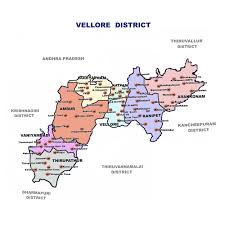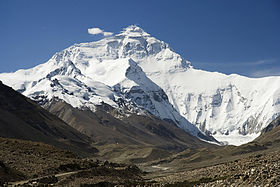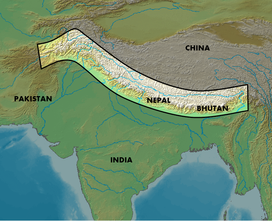The best place for an long ride in bike is Pondicherry.
Pondicherry is a city, an urban agglomeration and a municipality in Pondicherry district in the Indian union territory of Puducherry. It is affectionately known as Pondy, and has been officially known by the alternative name Puducherry since 2006.
The distance from Chennai to Pondicherry is 169 Kms. It is an Beautiful place like
- Sri Aurobindo Ashram: ,A spiritual community established at Pondicherry by Sri Aurobindo Ghosh on November 24th 1926. The ashram has since become one of the prime destinations for tourists and spiritual seekers. The chief aims and ideals of the ashrams are based on the teachings of Sri Aurobindo and Mira Alfassa. The ashram contains several offices, a library, a printing press, playground, art gallery, a dispensary/nursing home, dairy, farms, guest houses, bakery etc. the main building in the establishment are the marble Samadhi which is the resting place of Sri Aurobindo and Mira Alfassa. The visiting hours are from 8 am to 12 noon and from 2 pm to 6 pm.
- Auroville: With its name meaning ‘The City of Dawn’ is a township located 8 kilometers from Pondicherry. It was founded in 1968 by Sri Aurobindo and Mira Alfassa and was designed by the French architect Roger Anger. The idea was to create a universal town where people from all over the world would live in harmony and peace irrespective of caste, color, nationalities etc. During the inauguration soil from around 124 was placed in a lotus shaped urn to symbolize the idea behind the establishment of the township. The middle of the town is crowned by a temple which symbolizes the universal mother and is called ‘Matrimandir’. Today a population of 2,007 people houses the colony from over 44 different countries.
- Immaculate Conception Cathedral: Consecrated in 1791, the 300 year old church is the cathedral for the Archdiocese of Pondicherry and Cuddalore. The Immaculate Conception Cathedral as we see today was built on the place where three other churches were built before the French occupation of Pondicherry. The construction started in 1791 and further improvements were made to the building till 1987. The feast of the church is celebrated on the 8th of December every year. The church was also visited by Mother Teresa and is one of the oldest churches in Puducherry. It is also known by the locals as ‘Samba Kovil’.
- Ousteri Wetland and National Park: Located on the Pondicherry-Villuppuram road at a distance of 10 kilometers from the town of Pondicherry, the Ousteri Wetland and National Park covers an area of around 3.9 sq kilometers. Geographically the place lies in the territory of both Puducherry and Tamil Nadu. The place is home to a huge variety of aqua-fauna and avi-fauna. The place is frequented by several tourists because of the house boat services offered here. The several unique species of trees and herbs here attract a huge number of migratory birds and has become an important ecological niche in the south Indian region. The various birds and aquatic species found here make it a photographer’s delight and is a must visit for a shutterbug.
- Promenade beach: About 1.5 long, the Promenade beach is one of the main beaches in Puducherry. The walk is characterized by various landmarks and statues including the statue of Joan of Arc, the Heritage town hall, Dupleix statue, the statue of Mahatma Gandhi, the old light house etc. if you need a calm and quaint place perfect for an evening stroll, this is a place you want to be at. The sea breeze and the sights and sounds work as a relaxing potion on your min. The beach is a recommended visit which is devoid of the hustle of the city streets. There is also a well established tourist center where you can get some extra information about the town of Pondicherry.
- Basilica Of The Sacred Heart Of Jesus: Located at the south boulevard, the Basilica Of The Sacred Heart Of Jesus was consecrated on December 17th, 1907. The building is a fine specimen of gothic style architecture and has become a famous pilgrimage spot for the Christians in India. The structure of this church is 50 meters long, 48 meters wide and 18 meters high and is held by 24 columns. The windows are adorned with stained glass paintings of 28 saints who were devoted to the sacred heart of Jesus. The church premise also has a grotto dedicated to our lady of Lourdes, a parish hall and an adoration chapel. The church was fully renovated and restored in 2005 giving it its current look, however only minor physical changes were made to the structure.
- Sri Varadaraja Perumal Temple: Located on M.G. road, Sri Varadaraja Perumal Temple is considered to be the oldest Hindu temple in Pondicherry and dates back to 600 ad. The temple is built in Dravidian style of architecture evident by its sculpted pillars and a brightly colored gopuram adrorned with the sculptures of the Hindu Gods and Goddesses. The temple is dedicated to Sri Varadaraja Perumal an incarnation of lord Vishnu. According to local legend the temple was originally supposed to house the idols of Lord Rama, Lakshamana, Sita and Lord Hanuman which were brought from the sea by the local fishermen. Right behind the temple there is a shrine dedicated to Lord Narsimha, another incarnation of Lord Vishnu. The temple is a famous pilgrimage spot for the Hindus in Pondicherry and south India.
- Botanical Garden: Located south of the new bus stand in Pondicherry, the botanical garden was founded in 1826 and is another example of French influence in Pondicherry. The structure of the gate makes the whole place stand out in its otherwise Tamil town location. It was originally laid out in a typical French style garden, with gravel lined paths, pruned trees and fountains. The place features many different species of exotic plants and shrubs from all around the world. The place was turned into a botanical garden in 1931 by the French botanist and horticulturist George S. Perrottet. The garden also features a musical fountain which has two shows during evenings at the weekends.
- French War Memorial: Located on the Goubert Avenue, the French war memorial was built in 1971 to commemorate the loss of the brave French soldiers during the First World War. Every year on Bastille Day (July 14th) the memorial is illuminated and pays homage to the soldiers. It is a must visit place for the tourists, especially when visited on Bastille Day as the commemoration ceremony is a marvelous sight to gander at and offers an amazingly pleasant experience.
- Pondicherry Museum: Located in Bharathi Park in the center of the town, Pondicherry museum houses various sculptures and other archeological findings from the Arikamedu Roman settlement which is an ancient port 7 kilometers from the city. The museum also boasts of its various rare statues and bronze sculptures which belong to the Chola and Pallava dynasties. One can also gather detailed knowledge about the history and French colonial details in this museum. A collection of snail shells, temple lamps and other handicrafts are also displayed in this museum and is a must visit.
Pondicherry is also a popular weekend destination for the neighboring cities of Chennai and Bangalore. One of the reason being the low taxations on liquor which makes alcoholic beverages cheaper in Pondicherry. Nevertheless tourist places in Pondicherry are a must visit place in every tourist’s itinerary.












